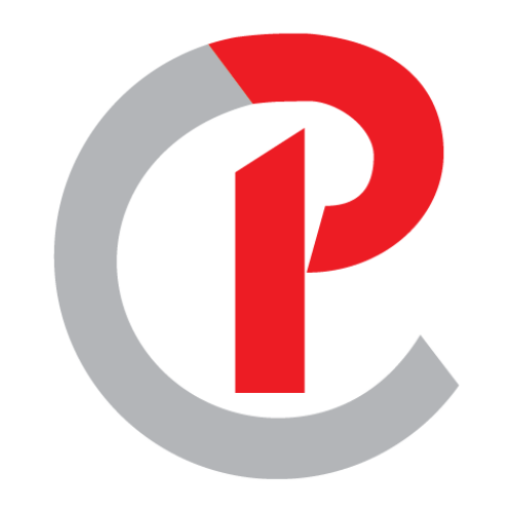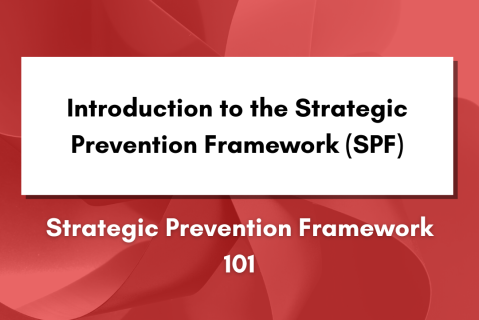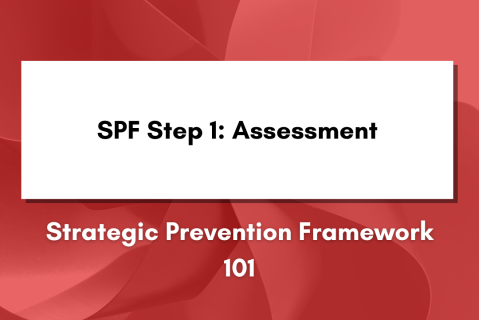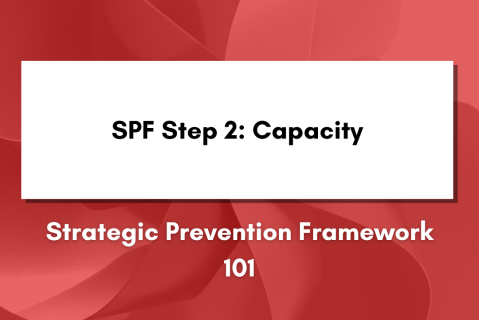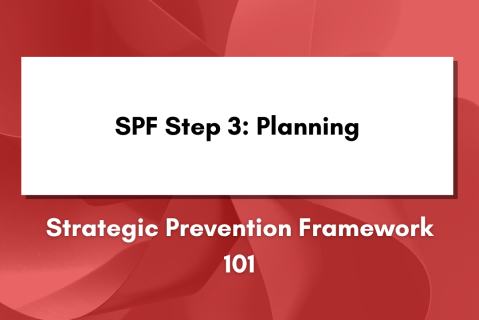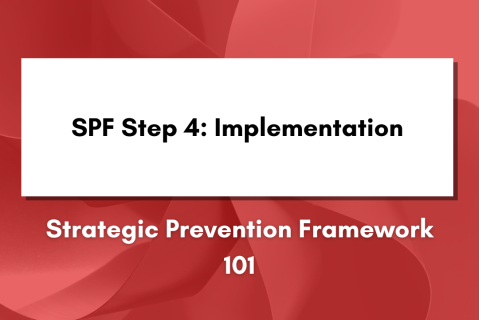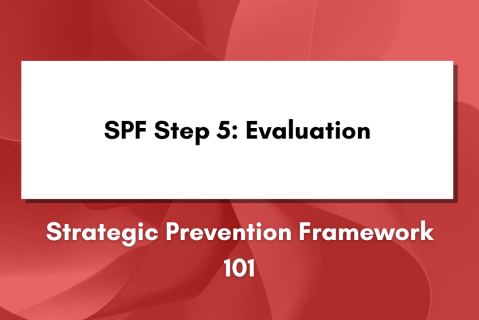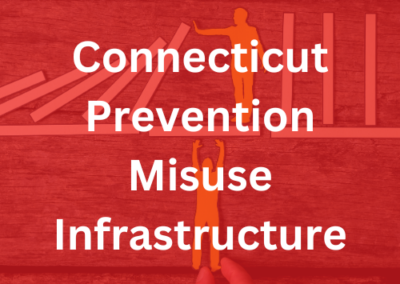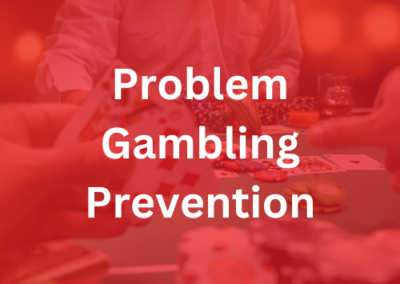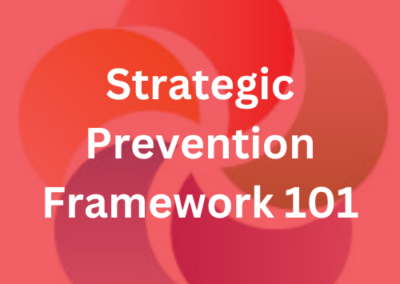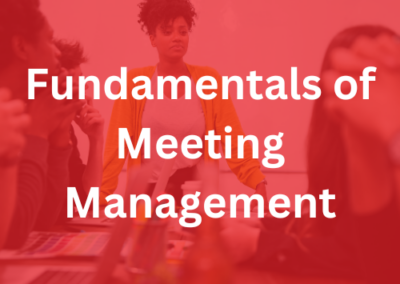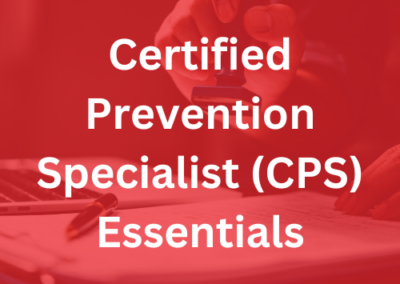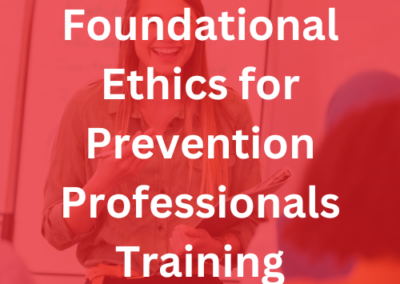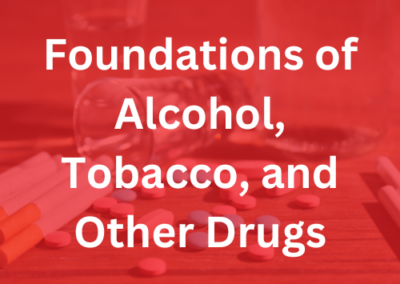Overview
Embark on a comprehensive journey through the landscape of substance use with our online course, “Foundations of Alcohol, Tobacco, and Other Drugs.” This course offers in-depth lessons on Alcohol, Cannabis, Opioids, Stimulants, and Tobacco, providing a robust foundation for understanding the complexities of these substances.
Each lesson in the Strategic Prevention Framework 101 course is worth 0.25 CEUs, providing a total of 1.50 CEUs upon completion of the entire course. This course is essential for professionals looking to deepen their knowledge of the SPF and enhance their ability to implement effective prevention strategies.
Course Highlights
-
Introduction to the Strategic Prevention Framework:
Begin with an overview of the SPF, understanding its purpose, guiding principles, and how it serves as a foundational model for substance use prevention. -
SPF Step 1: Assessment:
Learn the critical first step of the SPF—Assessment. This lesson focuses on collecting and analyzing data to identify local prevention needs and prioritize resources effectively. -
SPF Step 2: Capacity:
Explore the importance of building capacity within communities. This lesson covers strategies for increasing the readiness and resources necessary to address identified prevention needs. -
SPF Step 3: Planning:
Delve into the planning phase of the SPF. This lesson guides participants through developing a comprehensive prevention plan, setting clear objectives, and selecting appropriate evidence-based strategies. -
SPF Step 4: Implementation:
Understand how to put plans into action with the Implementation step. This module covers the processes and considerations for effectively launching and managing prevention initiatives. -
SPF Step 5: Evaluation:
Learn how to assess the effectiveness of prevention efforts through the Evaluation step. This lesson emphasizes the importance of ongoing monitoring and evaluation to inform continuous improvement.
Course Objectives
-
Understand the Strategic Prevention Framework
Explain the purpose, guiding principles, and overall structure of the Strategic Prevention Framework (SPF). -
Conduct a Comprehensive Assessment
Collect and analyze data to assess community needs and identify priority areas for substance use prevention. -
Build Community Capacity
Develop strategies to enhance community readiness and resources, ensuring the effective implementation of prevention initiatives. -
Develop a Strategic Plan
Create a detailed prevention plan with clear objectives, evidence-based strategies, and a roadmap for implementation. -
Implement Prevention Strategies
Execute the prevention plan, managing resources, engaging stakeholders, and ensuring fidelity to the selected strategies. -
Evaluate Prevention Efforts
Conduct ongoing evaluation of prevention activities to measure effectiveness, identify areas for improvement, and sustain successful interventions.
6 Lessons
6 Knowledge Checks
1.50 Continuing Education Units
Check out the Included Lessons
This course equips participants with the knowledge and skills necessary to apply the Strategic Prevention Framework in their work, ensuring a structured and effective approach to substance use prevention.
More Related Courses
- All
- Certified Prevention Specialist (CPS) Essentials
- Connecticut Prevention Misuse Infrastructure
- Coordinator's Guide to YPA Onboarding
- Foundational Ethics for Prevention Professionals Training
- Foundations of Alcohol, Tobacco, and Other Drugs
- Fundamentals of Meeting Management
- Prevention 101
- Problem Gambling Prevention
- Strategic Prevention Framework 101
